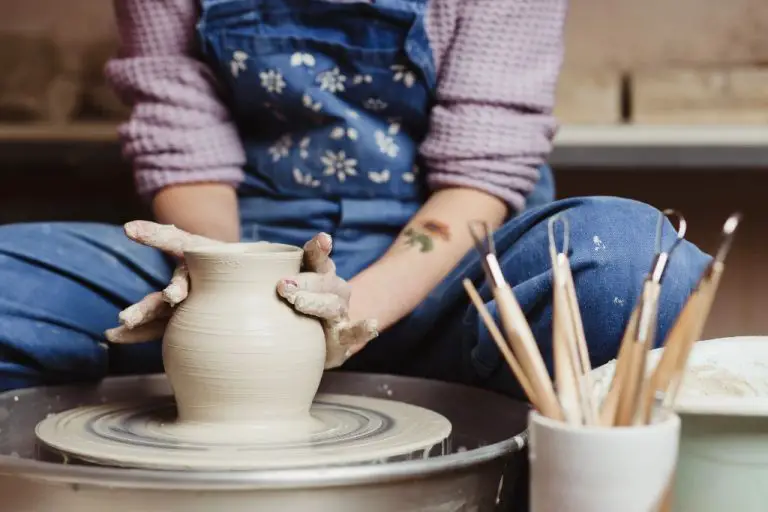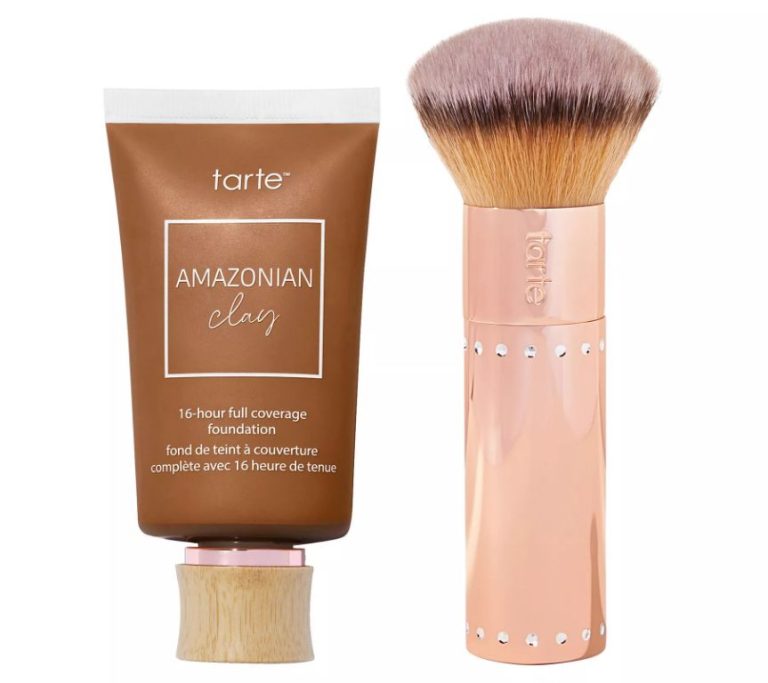Is Polymer Clay Man Made?
What is Polymer Clay?
Polymer clay is a modeling and sculpting material made from polyvinyl chloride (PVC), resin, mineral fillers, and plasticizers. It is a type of plastic that can be molded and shaped when raw, then hardened by baking in a conventional oven. The baking process causes the monomers to link together via polymerization and form long, stable polymer chains. This transforms the clay from a pliable, putty-like material into a strong, durable solid that retains its shape.
Unlike natural clays like ceramic clay that harden from evaporating water, polymer clay hardens by undergoing an irreversible chemical reaction. The plasticizers added give it a smooth, flexible texture for sculpting detailed shapes and figures. Polymer clay can be conditioned and reused indefinitely, unlike air-dry clays which eventually dry out. Its bright, stable colors and versatility make polymer clay popular for arts & crafts, jewelry making, doll/figurine making, and more.
History of Polymer Clay
Polymer clay was invented in Germany in 1939 by Karl Vollmer, an employee at the German doll company Eberhard Faber. At the time, polymer clay was marketed as “Fimo” clay. The name Fimo came from “FI” for fine and “MO” for modeling. Vollmer developed Fimo by combining PVC resins with plasticizers and mineral fillers. It allowed modeling with a material that could then be hardened when heated in an oven.
Fimo clay was showcased at the Nuremberg Toy Fair in 1955, generating excitement as a bright, elastic modeling compound that maintained its properties even when hardened. By 1959 it was widely available throughout Europe. The United States based company Eberhard Faber started selling Fimo in North America in the 1960s, marketing it alongside modeling clay.
Manufacturing Process
Polymer clay is made through an industrial process of mixing and heating various synthetic ingredients, primarily polyvinyl chloride (PVC) resins and plasticizers. The raw materials are measured out and blended together in large batches, then fed into an extruder machine.
The extruder heats and melts the PVC resins and other ingredients under high temperatures reaching 160°C/320°F. The molten material is forced through a die into thin strands, cooled in water, then cut into small pellets. The pellets are bagged and packaged for shipping to art suppliers.
Additional coloring pigments and mica powders may be added to the initial mixture to produce colored polymer clays. Metallic clays incorporate very fine aluminum or bronze powders. The ingredients are carefully chosen and combined in precise ratios to achieve optimal sculpting properties in the finished polymer clay.
This industrial manufacturing process allows polymer clay to be produced in bulk quantities in a standardized way. The uniform pellets can then be purchased by artists and hand-molded into detailed sculptures, jewelry, home decor items, and more. So in summary, polymer clay is a man-made material produced through an extensive process of mixing, melting, and forming raw plastic materials.
Key Properties
One of the defining characteristics of polymer clay that makes it so useful is that it can be molded and shaped at room temperature. When raw polymer clay is first taken out of its packaging, it has a doughy, malleable texture similar to Play-Doh. This allows artists to shape it into intricate designs by hand without needing any special tools or heat application. The clay maintains its shape while being worked on.
Unlike natural clays which harden from air exposure, polymer clay hardens and becomes durable only when baked in an oven. The baking process causes chemical changes at the molecular level that transform the clay into a strong, permanent solid. Typical baking temperatures range from 265°F to 275°F. After baking, the clay has a hard, plastic-like finish that retains all of the details from when it was molded. This makes polymer clay well-suited for creating long-lasting decorative and functional items.
Types of Polymer Clay
There are several major brands of polymer clay that are popular among artists and crafters:
-
Sculpey – One of the most widely used brands, Sculpey comes in a variety of lines including Original, Premo, Soufflé, and Bake Shop. Sculpey is known for its versatility and easy workability.
-
Fimo – Produced by Staedtler, Fimo has a wide array of colors and finishes. Their Fimo Professional line is higher quality and good for achieving detailed results.
-
Kato Polyclay – Kato Polyclay is known for its strength and durability once cured. It’s a good choice for pieces that will be more heavily handled and used.
-
Cernit – Cernit polymer clay is manufactured in the Czech Republic and is prized for its very smooth texture and ability to take fine detail.
-
Premo – Produced by Sculpey, Premo is their high-end polymer clay that cures strong and has vibrant colors. It’s a popular choice for jewelry making.
There are also regional brands like Makin’s Clay and Van Aken’s Clay that have devoted local followings. Polymer clays can be mixed together to create custom colors and properties as desired.
Uses of Polymer Clay
Polymer clay is used to create a diverse array of arts and crafts. Its malleable texture makes it easy to mold into almost any shape imaginable. Here are some of the most common uses of polymer clay:
Jewelry – Polymer clay is extremely popular for making jewelry. It can be rolled thin and shaped into beads, pendants, charms, cabochons, and more. Many jewelry artists incorporate polymer clay elements into their designs for colorful and unique accessories.
Figurines – The sculpting potential of polymer clay makes it a favored material for miniature and doll artists. It can be used to hand-sculpt remarkably detailed figurines, dollhouse miniatures, charms, ornaments, and more.
Decorative Items – From bowls to vases, frames, boxes, and wall hangings, polymer clay is suitable for all kinds of decorative pieces. The finished items can be left solid colored, painted, or combined with other mixed media elements.
Wearable Art – Polymer clay is pliable at low temperatures, allowing it to be molded directly onto the body to create customized wearable art pieces like rings, bracelets, pendants, and more tailored exactly to the wearer.
Home Décor – For the crafty home decorator, polymer clay can add a handmade touch to home accents. It can be sculpted into knobs, buttons, candle holders, coasters, switch plates, decorative bowls, and much more.
Advantages Over Natural Clays
Polymer clay offers several key advantages over natural clays like pottery clay or modeling clay:
Bright Colors
One of the main benefits of polymer clay is the wide range of bright, vivid colors available. While natural clays are limited to earth tones like brown, gray, and terracotta, polymer clays can be produced in any color. This makes it possible to create colorful sculptures, jewelry, decorations, and more.
Versatility
Polymer clay is extremely versatile. It can be shaped, sculpted, molded, extruded, and more. Polymer clay can be blended, marbled, or mixed to create unique color patterns. After baking, it becomes a strong, durable material. Natural clays remain brittle after drying. Polymer clay’s versatility allows endless creative applications from jewelry to figurines and beyond.
Durability
When cured in a regular oven, polymer clay undergoes a chemical process that makes it very strong and durable. Pieces made from polymer clay will not crumble or degrade easily over time. In comparison, natural clay pieces are fragile and porous unless fired at extremely high temperatures in a kiln. Polymer clay’s durability makes it suitable for pieces meant to last for years.
Artists Well-Known for Polymer Clay
Polymer clay is a popular medium among artists for its versatility and ability to mimic natural materials like stone, wood, and metal. Here are some artists who have mastered the art of polymer clay and become well known for their unique sculptures and figures:
Angela Mabray is an American artist specializing in polymer clay to create life-like animal sculptures. Her realistic animal figures often incorporate other mixed media like glass eyes and faux fur. She is an award-winning member of the International Polymer Clay Association.
Helen Breil is an English artist renowned for her colorful jewelry, figurines and home decor objects made from polymer clay. She has authored several instructional books and her work has been exhibited internationally. She uses innovative techniques like mokume gane to achieve stunning patterns.
Katherine Dewey is a polymer clay artist from Santa Barbara, California creating highly detailed human figurines. She is known for “Boho Family” – a series of free-spirited characters. Her figures display skin textures, fabric folds and delicate accessories. She also makes realistic animal sculptures.
Lindly Haunani is a Hawaii-based artist who hand-sculpts intricate flowers, fruits and sea creatures from polymer clay. Her work focuses on natural themes like coral reefs, botanical gardens and tropical landscapes. She uses translucent clays to mimic the appearance of water.
These are just some of the innovative artists showing the possibilities of polymer clay as a fine art and craft material. Their unique designs demonstrate that polymer clay can produce professional, museum-quality artwork.
Is Polymer Clay Safe?
When working with polymer clay, there are some safety considerations to keep in mind. Polymer clay is generally considered non-toxic in its finished state, meaning once it has been cured in the oven. However, there has been some concern in the past over phthalates, which are chemicals sometimes used to soften PVC plastic.
Some brands of polymer clay previously contained phthalates, but most major brands now produce phthalate-free varieties. Traces of phthalates may still be present during the sculpting process before curing, so it’s recommended to wash hands after use and avoid ingestion.
There are a few other precautions to take when using polymer clay:
- Work in a well-ventilated area to avoid breathing in fumes
- Avoid contact with eyes and skin irritation
- Don’t bake clay in the same oven used for food preparation
- Thoroughly clean surfaces, tools and hands after use
When used properly by following basic safety guidelines, polymer clay is generally considered a non-toxic crafting material for both children and adults. But as with any art material, some sensible precautions should be taken to use it safely.
The Verdict: Man-Made Material
After reviewing the history, manufacturing process, and composition of polymer clay, the verdict is clear – polymer clay is an artificial, manufactured product and not a naturally occurring material. While traditional clays are mined from the earth, polymer clays are fabricated in a factory setting from synthetic ingredients like PVC, plasticizers, and pigments. The chemical process used to create polymer clay is carefully controlled to achieve desired properties like flexibility, workability, and color. Brands market polymer clay as a more consistent, versatile alternative to natural clays that offers artists and crafters superior modeling and sculpting abilities. So in conclusion, polymer clay is very much a man-made material, engineered and produced solely by human design and effort, in contrast to natural clays formed naturally by geological processes over time.




